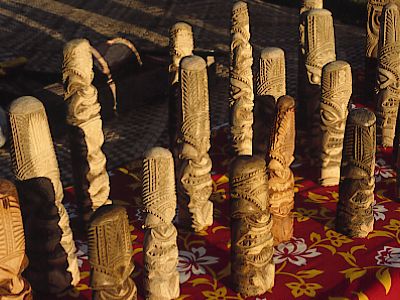
Hawaiian quilting, first brought to the islands by missionaries, has evolved into a unique island craft featuring innovative, colorful designs and intricate stitchery.
Quilting has been an art form and craft in Hawai’i for over 175 years. In the early 1800s, cloth materials for patch pieces were taken from sacks of flour and sugar due to the general lack of scraps. Most dresses of the time were cut full and straight, taking the full width of cloth and leaving little behind for quilting. The nature of Hawaiian quilting evolved from the use of large seamless sheets of cloth to create both the quilt border and the centerpiece or medallion.
Quilt patterns have been traditionally created by folding sheets of paper as patterns or folding the cloth and cutting to create a motif that repeats itself four times. Many patterns were created to represent nature. Popular choices include breadfruit, mango, pineapple and ferns or familiar fish, octopus or turtles. The crystal chandelier from ‘Iolani Palace was a favorite subject as were vases or baskets of flowers. Even the highly elaborate design of a stained glass window on the first parlor car brought for a local train is the subject of an early quilt.
Hawaiian quilts are as unlimited as a quilter’s imagination and as colorful as a painter’s palette. However, the earliest quilts favored “turkey” red on white. This is possibly inspired by tapa, the pounded bark “cloth.”
One of the best collections of Hawaiian quilts is housed in the Bishop Museum in Honolulu with several on display at all times.




